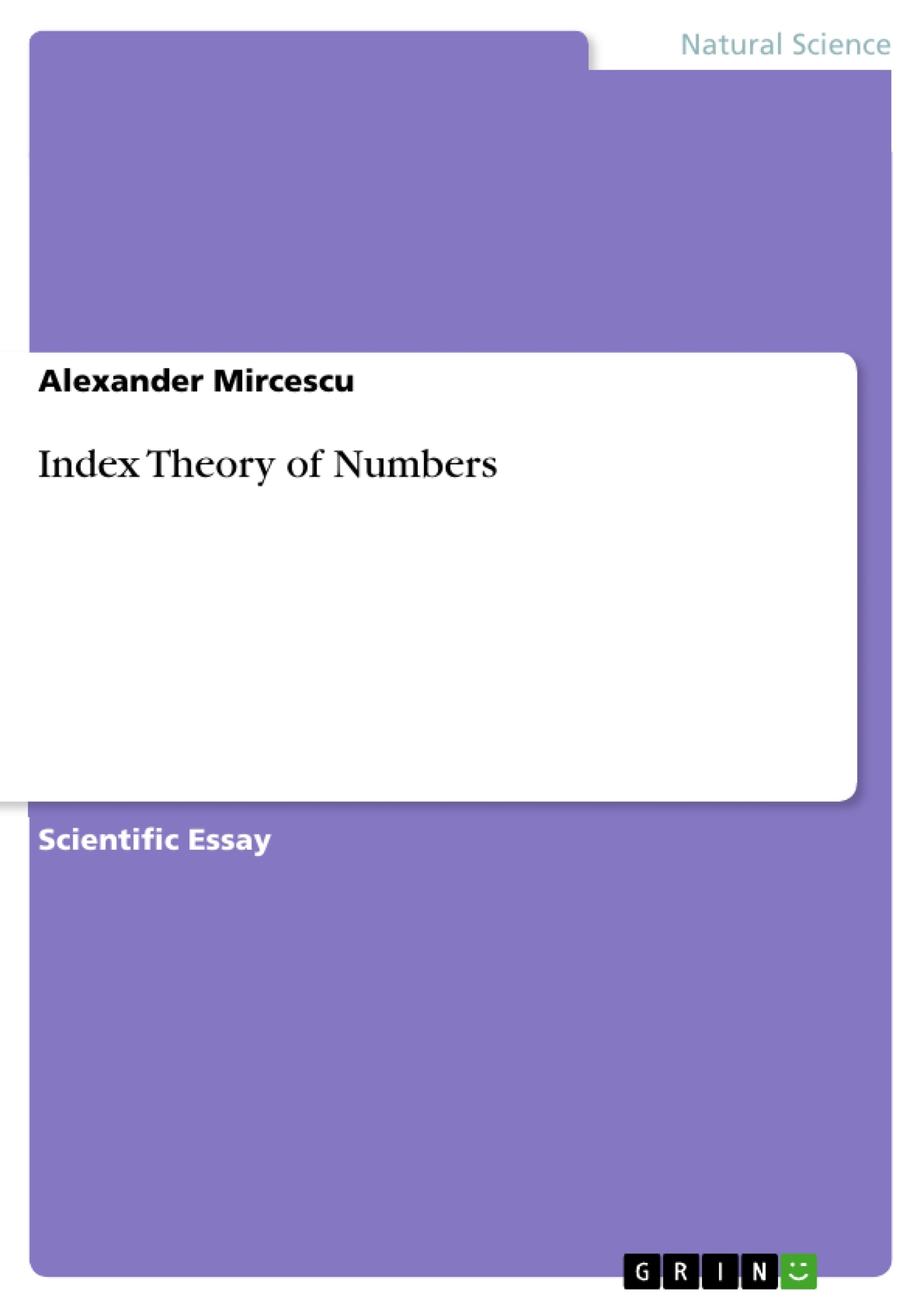Unlock the hidden architecture of reality itself, layer by mathematical layer. This book is your definitive guide to understanding the evolution and intricate relationships between fundamental number systems, from the intuitive simplicity of natural numbers to the bewildering complexity of sedenions. Embark on a journey that begins with the bedrock principles of set theory, meticulously deconstructing each number system – natural numbers, integers, rational numbers, real numbers, complex numbers, quaternions, octonions, and sedenions – revealing their unique characteristics and the axiomatic foundations upon which they are built. Discover how each system expands upon its predecessors, inheriting properties while simultaneously introducing novel mathematical structures. Explore the power of mathematical axioms in defining these systems, and learn how indices serve as fingerprints, uniquely identifying each number set. This is more than just a mathematical exposition; it's an exploration of the building blocks of mathematical thought, offering profound insights into the nature of numbers and their role in shaping our understanding of the universe. Whether you're a student seeking a comprehensive overview, a researcher delving into advanced topics, or simply a curious mind fascinated by the elegance of mathematics, this book provides a rigorous and accessible pathway to mastering the intricacies of number systems and their underlying set-theoretic principles, bridging the gap between abstract concepts and concrete understanding. Prepare to have your perception of numbers transformed as you unravel the secrets encoded within these essential mathematical structures, equipped with keywords such as set theory, commutative group, integrity ring, field and successor function.
Inhaltsverzeichnis (Table of Contents)
- I. Basic Structure
- II. Number Systems
- 1 The Natural Numbers: The Set N
- 2 The Integers: The Set Z
- 3 The Rational Numbers: The Set Q
- 4 The Real Numbers: The Set R
- 5 The Complex Numbers: The Set C
- 6 The Quaternions: The Set H
- 7 The Octonions: The Set O
- 8 The Sedenions: The Set S
- 9 Summary of the Structures N, Z, Q, R, C, H, O and S
Zielsetzung und Themenschwerpunkte (Objectives and Key Themes)
This work aims to explore the fundamental structures of various number systems, starting from basic set theory and progressing through increasingly complex number sets. The text analyzes the defining characteristics and properties of each system, highlighting their relationships and evolution.
- Development of Number Systems from Set Theory
- Characteristics and Properties of Different Number Sets
- Relationships Between Number Systems
- Introduction of Indices to Characterize Number Systems
- Mathematical Axioms and their Role in Defining Number Systems
Zusammenfassung der Kapitel (Chapter Summaries)
I. Basic Structure: This chapter lays the groundwork for understanding the subsequent discussion of number systems by introducing fundamental concepts from set theory. It defines sets, their properties, and operations on sets, using Cantor's definition of a set as a fundamental building block. The chapter emphasizes the distinction between a mere collection of elements and a formally defined set, highlighting the importance of distinguishable elements and the concept of the empty set. The power set is also introduced, demonstrating how to construct new sets from existing ones. This foundation is crucial for understanding how the different number systems are built upon the concept of sets.
II. Number Systems: This chapter delves into the structure and properties of various number systems, starting with the natural numbers and extending to more complex systems. Each section meticulously details the construction and properties of each system (Natural Numbers, Integers, Rational Numbers, etc.). The chapter uses mathematical axioms to rigorously define the properties of each number set and introduce indices as characteristic properties to differentiate them. This approach establishes a clear hierarchical structure, illustrating the gradual expansion of mathematical concepts from simple to complex number systems, showcasing the inherent relationships and limitations of each.
Schlüsselwörter (Keywords)
Set theory, number systems, natural numbers, integers, rational numbers, real numbers, complex numbers, quaternions, octonions, sedenions, axioms, indices, successor function, commutative group, integrity ring, field.
Häufig gestellte Fragen
Was ist der Zweck dieses Textes?
Dieser Text dient als umfassende Sprachvorschau, einschliesslich Titel, Inhaltsverzeichnis, Zielen und Themenschwerpunkten, Kapitelzusammenfassungen und Schlüsselwörtern, und soll einen Überblick über die Struktur und Eigenschaften verschiedener Zahlensysteme geben.
Welche Zahlensysteme werden in diesem Text behandelt?
Der Text behandelt die natürlichen Zahlen (N), die ganzen Zahlen (Z), die rationalen Zahlen (Q), die reellen Zahlen (R), die komplexen Zahlen (C), die Quaternionen (H), die Oktonionen (O) und die Sedenionen (S).
Was sind die wichtigsten Ziele dieses Textes?
Die Hauptziele sind die Erforschung der grundlegenden Strukturen verschiedener Zahlensysteme, die Analyse der definierenden Eigenschaften und Merkmale jedes Systems sowie die Hervorhebung ihrer Beziehungen und Entwicklungen.
Welche Themenschwerpunkte werden im Text behandelt?
Die Themenschwerpunkte umfassen die Entwicklung von Zahlensystemen aus der Mengenlehre, die Eigenschaften verschiedener Zahlenmengen, die Beziehungen zwischen Zahlensystemen, die Einführung von Indizes zur Charakterisierung von Zahlensystemen sowie mathematische Axiome und ihre Rolle bei der Definition von Zahlensystemen.
Was wird im Kapitel über die Grundstruktur behandelt?
Das Kapitel über die Grundstruktur legt den Grundstein für das Verständnis der nachfolgenden Diskussion über Zahlensysteme, indem es grundlegende Konzepte aus der Mengenlehre einführt. Es definiert Mengen, ihre Eigenschaften und Operationen auf Mengen, wobei Cantors Definition einer Menge als grundlegender Baustein verwendet wird.
Was wird im Kapitel über Zahlensysteme behandelt?
Das Kapitel über Zahlensysteme befasst sich mit der Struktur und den Eigenschaften verschiedener Zahlensysteme, beginnend mit den natürlichen Zahlen und sich bis zu komplexeren Systemen erstreckend. Es werden mathematische Axiome verwendet, um die Eigenschaften jeder Zahlenmenge rigoros zu definieren, und Indizes als charakteristische Eigenschaften zur Unterscheidung der Zahlenmengen eingeführt.
Welche Schlüsselwörter werden in diesem Text verwendet?
Die Schlüsselwörter umfassen: Mengenlehre, Zahlensysteme, natürliche Zahlen, ganze Zahlen, rationale Zahlen, reelle Zahlen, komplexe Zahlen, Quaternionen, Oktonionen, Sedenionen, Axiome, Indizes, Nachfolgerfunktion, kommutative Gruppe, Integritätsring, Körper.
- Quote paper
- Dr. Alexander Mircescu (Author), 2017, Index Theory of Numbers, Munich, GRIN Verlag, https://www.grin.com/document/374320



